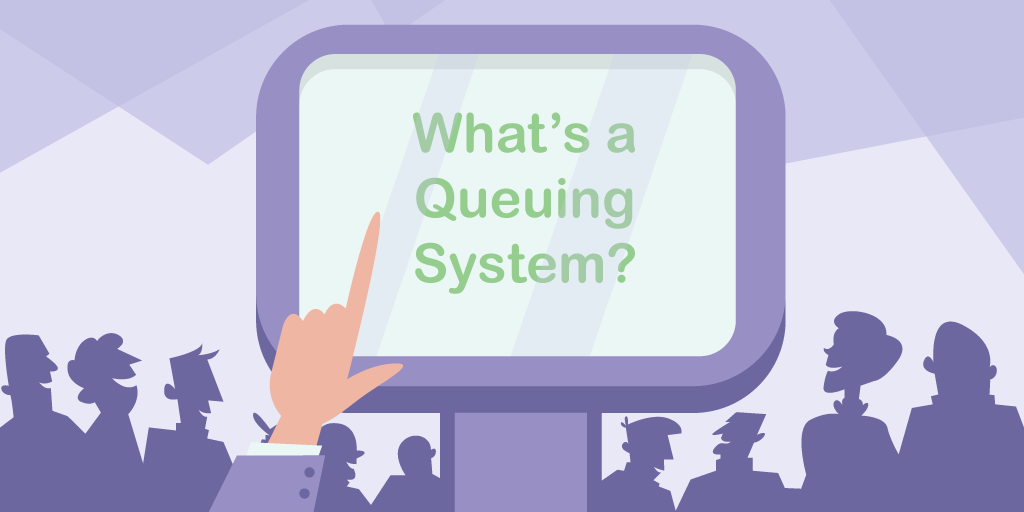Queues are a thing that came to happen naturally in many countries around the world, but there’s been one country where queues were an important part of life. This country is not even on the map anymore — its name is the Soviet Union.
In the USSR, standing in line was not only a means of getting something. It was almost a sport, an activity in itself.
Queues were a good enough reason to socialize, share news, gossip and pass time.
Have you ever complained about how long you had to wait? Let’s roll back a few decades and see whether you don’t have it as bad as you think.
A brief history of the Soviet Union breadlines

We can’t talk about Soviet queues without talking about breadlines.
The word “breadline” is something that, in itself, has become almost synonymous with communism. Soviet economy was, to quote Peter Gatrell, “an economy of absolute shortage”.
In fact, even the October Revolution of 1917 was caused partly by bread shortages. The subsequent Civil War did nothing to help the situation, and in 1920, grain production was only at 60% of its prewar numbers.
The failure to provide the population with bread, capitalize on the country’s agricultural potential, and create reasonable allocation policies led to several famines in the first half of the 20th century. Most infamous, the Povolzhye Famine, claimed lives of five million people.
This scarcity spread over to other products.
In the post-Stalin era, there were efforts to improve the lives of citizens by increasing wages and mass-manufacturing basic consumer goods (soap, shoes, clothes, etc.). Despite all that, queues remained the central part of life in the USSR.
The scarcity of food and consumer goods went uninterrupted for the entire duration of the Soviet Union’s existence. It is Gorbachev’s refusal to change the state price policy that has worsened the shortages.
It’s arguable what exactly led to the USSR’s eventual collapse in 1991, but it’s self-evident that shortages became the tell-tale sign of the degradation of the centrally-planned economy.
And has the USSR tried to fight against its growing queues and unsatisfactory customer experience? It has but not quite effectively.
Reports from the NKVD mention thousand-people long queues in city stores in the late 30s and early 40s. Instead of trying to improve the situation, law enforcement agencies went about it their own way.
In 1940, queues were practically outlawed: there could be a queue inside a store during its working hours, but queues outside the store were punishable by fines.
Needless to say, that was nothing more than a way to treat the symptoms, not cure the system's apparent disease.
Queues and life in the USSR

But the question remains, where did queues come from in the USSR?
Naturally, queues form whenever the number of people seeking a product or a service exceeds the number of available products or service providers.
This situation, familiar to everyone in our modern capitalist times, was grossly exacerbated by the Soviet-style planned economy. Most Soviet products — with the exception of military equipment — were produced in inadequate quantities.
No matter how people may wax nostalgic about the USSR’s supposed superior product quality, most Soviet products were far from top-grade items.
And the reason? No free market and no commercial competition.
This means that no matter the quality, the products were going to be snatched from the shelves, either way.
To put it simply, there was no incentive for manufacturers to do better.
In a closed economy, the buyer has not only limited choice but also limited rights.
From breadlines to meatlines: product shortages in the USSR
The Soviet queuing practices turned “First come, first served” into a social Darwinist principle.
The first few people in line for meat could get their hands on the best pieces. The rest of people waiting in line could only get bones and skin with lower meat contents.
This same Darwinist principle applied not only to stores but the entire nation. The shops in Moscow were better-stocked with meat and other goods, and thus attracted provincial shoppers from as far as 100 miles away.
This “meat tourism” became the subject of the famous Soviet joke riddle:
"What is something that is green, long and smells of sausage? A tram from Moscow."
In 1990, Mikhail Gorbachev, the first and last President of the Soviet Union, and George H. W. Bush signed a trade agreement that focused on exporting American-made frozen chicken legs to the USSR. The quality of these chicken legs was, in comparison to the existing standards and especially at the time of food deficit, unheard of.
These chicken legs were quickly dubbed “Bush legs”.
Soviet queues weren’t just about bread and meat, though. People lined up for exotic, rare products — such as bananas, tangerines, watermelons and melons. Pretty much any fruit that wasn’t an apple was in deficit.
In the 1980s, coffee and caviar became scarce as well. Despite the Warsaw Pact trade agreements within the communist bloc, the Soviet and USSR-adjacent countries couldn’t effectively close the gap in each other’s supply.
The retail in the USSR was inefficient, if not to say almost non-existent. The way it was organized, buyers had to stand in separate lines for specific products — meat, dairy, vegetables, etc. — and then wait in another, general line at the cashier.
What things people stood in line for in the USSR
Despite what Soviet propoganda would want you to believe, most consumer goods were in short supply. This includes not only meat and canned food but also clothes, shoes, and books.
Yes, books.
The USSR patted itself on the back for being the world's "most well-read country". A 1966 study found that Soviet citizens spent roughly 11 hours a week reading books.
This can be easily explained by a lack of other forms of entertainment: no foreign movies, a limited number of TV channels, only occasional cartoons for kids, etc.
Paradoxically, it was an adventure in itself to acquire more books. In 1974, they introduced a new way to purchase reading material.
You could exchange 20 kg of paper (from old newspapers and magazines) for a special coupon. You then had to use this coupon at a book store or book fair to get what you want.
This process also involved quite a bit of queuing and waiting.
The lack of other consumer goods is because of no competition in the industry. Whereas in the Western world, demand for the most parts dictates the supply, it was the other way around in the USSR.
The higherups decided how many pairs of shoes or other goods need to be manufactured. Many items of clothing ended up being a "limited edition".
Good luck finding shoes that not only fit but also look good on you!
With all this in mind, it was not unusual for people to join a line they saw forming on the street.
A queue meant that the store must have gotten some new goods worth your time.
Here's a story of what the average Soviet citizen had to go through to purchase simple trainers:
Spring 1987. Imported trainers were shipped to Murmansk. Unfortunately, I learned about it too late, on the second day. I got a place in the line, somewhere in the seventh hundreds. I went twice to have my name on the list confirmed. After a day of standing in line, I moved forward by about 300 places. In the end, I ended up without any trainers.
In general, the Soviet Union food shortages in the 1980s is what people recall when they're talking about lines and shortages.
Still, people could sometimes get their hands on quality goods from beyond the Iron Curtain (provided that they knew the right people).
Foreign-made denim wear was a rare commodity, but it still enjoyed popularity among not only youth but also adults.
Soviet consumers were willing to part with big money, too: it wasn’t uncommon to buy a pair of American jeans for nearly a month’s worth of your salary.
Even alcohol, a product whose consumption rose to unprecedented heights under the Soviet regime, suffered from the inadequate supply.
Soviet’s cheap and accessible brand of sparkling wine, called simply Soviet Champagne (Sovetskoye Shampanskoye), was a pale imitation of the real bubbly beverage.
But in the absence of any alternatives, people didn’t and couldn’t know any better.
When Gorbachev took the radical step of introducing prohibtion in the USSR (the so-called Dry Law), alcohol shortage turned for the worse.
Already-limited availability, coupled with limited time for purchase and raised prices, was an unpopular decision that further harmed Gorbachev's image.
(Not to mention, it cost the economy around several billion Soviet rubles.)
Mile-long queues during the five-hour opportunity window for purchase became the norm.
Toilet paper shortages in the Soviet Union

Not even toilet paper was spared the brunt of Soviet queues.
It has to be noted that in the beginning, toilet paper wasn’t as widely-used. People would use newspapers instead, oblivious to the detrimental effects of the lead-heavy newspaper ink.
The first toilet paper factory in the USSR was built in 1969 — that's eight years since they launched the first man into space.
In a fashion that sounds outright kafkaesque right now, Soviet authorities had to start a large-scale social campaign.
Toilet paper and its benefits were being advertised in newspapers, magazines and even cinemas, before movies.
These efforts paid off. Despite its crude, sandpaper-like quality, people warmed up to toilet paper.
What happened then, though, was what always happens in a closed economic system whenever a product becomes too popular.
Soviet planning could not keep pace with the demand, prompting huge queues for toilet paper in stores.
Buyers would get a dozen rolls of toilet paper at a time, put a string through them and then put this absurd toilet paper bracelet on themselves.
Other types of queues in the USSR
And that’s just products and ! In addition to these shorter queues, Soviet people also had to stand in years-long queues for furniture, cars, and housing. You needed to enter the list
If a person missed their turn, no one would think twice of reminding him.
For all the anti-capitalist propaganda, it was the Soviet Union that was the true dog-eat-dog world.
A big lover of jokes at the expense of the Soviet Union, Ronald Reagan once told this tale:
There is a 10-year wait to get your own car, and you have to put up the money in advance. One man laid down the money, and the fellow in charge says to him: “Come back in 10 years and get your car.”
The man asks: “Morning or afternoon?”
“Ten years from now, what difference does it make?”
The man replies: “Well, the plumber is coming in the morning.”
The queue to the first McDonald’s in the USSR
There was one Soviet queue that made the headings of newspapers around the world.
You may have even seen the pictures — the opening of the first McDonald’s fast food restaurant in Moscow.
McDonald’s has been discussing the idea of opening a restaurant with Soviet officials since 1976. In 1988, they finally got a permission, and construction works started
A year later, over 50 million USD has been invested in this project, with a special factory for producing brand ingredients.
Over 35,000 people applied for a cashier position. At the time, Moscow restaurant set a record for being the largest McDonald’s in the world, with 700 inside and 200 outside seatings and almost 30 cash registers.
600 cashiers were selected from over 35,000 applicants.
The first Soviet McDonald’s restaurant opened its down on Pushkin Square, Moscow, on 31 January 1990. Initially, company projected 1,000 people coming to the opening of the restaurant.
They were off by several thousand.
In the opening hours, over 5,000 people queued up to taste their first burgers.
Throughout its launch day, Moscow McDonald’s set another record by serving more than 30 thousand visitors.
The previous record was set by McDonald's in Budapest, with just over 9,000 customers served.
Though it took people omore than five hours to get to the front, it wasn’t anything they haven’t experienced before. Waiting was a part of Soviet life.
As photographer Mitya Kushelevich puts it:
That wasn’t so much of a problem as we were used to standing in lines for days just to get our monthly ration of sugar and tea.
At 3.75 Soviet rubles, the Moscow Big Mac was by far the most expensive burger according to the Economist's Big Mac Index data.
(Interestingly, Soviet people were so unfamiliar with burgers that they'd eat them by picking apart and eating each layer separately with a knife and fork.)
McDonald’s launch in Moscow has almost become a myth in itself. There are a lot of anecdotes surrounding the launch of the Soviet McDonald’s.
Supposedly, there was a sign on the door stating the limit of burgers one person could order. This, of course, was in conflict with the mindset of Soviet people, who took deficit for granted and always bought in stock.
Another contrast was in customer service. As we’ve pointed out above, customer service was nonexistent in the USSR. That’s why managers had to train new cashiers to smile when serving.
Once inside, we were blown away by the number of young cashiers behind the huge counter, smiling, moving like bees, serving one meal after another. Nothing like our fat old ladies in white gowns sitting in front of empty shelves, pyramids of dusty canned food as window dressing.
It may sound absurd to us now, but a smile isn't always considered a sign of politeness and friendliness in different cultures. An old Russian proverb says, “A laugh without a reason is a sign of a fool”.
You can’t spell “USSR” without saying “us”

The waiting lines may not have been a Soviet invention, but they were a pervasive element in the life of your average Soviet citizen.
In a way, queues became the ultimate symbol of true Soviet equality. No matter who you were or where you came from, you had to stand in the same long lines for the same products.
And this is all the more surprising, seeing how long queues, once again, become the part of our lives. But instead of justifiable anger, some of these queues become the source of pride.
Joy, even.
How many times have you heard about the people who’ve been standing in line for hours, if not days, just to buy an iPhone a day earlier than anybody else? What about lines at Disney amusement parks?
Or Wimbledon's famous The Queue?
We need to remember that queues are, first and foremost, a failure in the supply system. All these companies who boast online about their long waiting lines are openly acknowledging their inability to properly serve you, their customer.
Queues in the USSR were, first and foremost, a symbol of government overreach. No wonder they became a frequent topic of political jokes passed around in private.
Here's our favorite:
Because of new Gorbachev laws, a man's been waiting for hours in line for vodka. He finally loses it and yells: “I can’t take this waiting anymore! I’m going straight to the Kremlin and I will choke this damn Gorbachev!”
The man leaves but after an hour, the people in the queue see him come back. “So... did you do it?” aks someone. The man replies: “No. I got to the Kremlin, but the line to kill Gorbachev was even longer.”


![Free Sign-Up & Sign-In Sheet Templates [PDF]](/static/img/cms-blog/44LPc9KSvoVha1N3Sh9FGc/improve-waiting-room-checklist.png)



